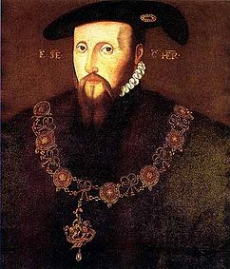
Email: EllaTournes@bexleygs.co.uk
Total Article : 45
About Me:Sixth form student currently studying English Literature, Drama and Theatre Studies, Classical Civilisation and History.

Edwards reign is unique in the way of how much influence his advisors had over him. Somerset’s role in the introduction of religious changes was crucial. He was a devout Protestant and was determined to carry on England’s religious changes from Cromwell and Cramner, without the resistance of Henry VIII. He tutored Edward VI to be Protestant, and support the Acts Somerset put in place. In the two year of Somerset’s protectorate, lots of religious reforms took place. The Act of Six Articles was repealed, priests were allowed to marry. The New Prayer Book was published, and the 1549 Act of Uniformity was passed, making its use in churches compulsory. After Somerset’s imprisonment, the more determined and rigorous Northumberland took over the role of Lord Protector. Some historians argue that Northumberland had no real religious convictions – he just thought that Protestant reforms would keep him in favour with Edward VI, and would increase his influence when the time came for Edward to rule by himself. He also saw Protestant changes as a way of increasing his own riches. Northumberland introduced the Second Prayer Book in 1552, which took away any hint of Catholic ideas. He also introduced the Second Act of Uniformity, making the first one more extreme – anyone who attended a service that didn’t use the English Prayer Book could be imprisoned, and priests who refused to use the new Prayer Book were dismissed, fined and imprisoned. Northumberland also introduced the Forty Two Articles – these laid down the official beliefs of the Church, giving Protestantism a definable quality that it had lacked before. The aesthetic elements of churches also changed the most dramatically under Northumberland – they were simpler, less extravagant, as not to distract people from worship. Statues of Saints were removed, warble altars were replaced with wooden tables, priest wore plain vestments as opposed to colourful ones. Anything valuable went into the Royal Treasure – a lot of it went into Northumberland’s pocket.
Thomas Cranmer had been one of the most influential religious figures throughout the reign of Henry VIII, and he had been trusted to be part of the Council of Regency. Cranmer was influenced largely by European Protestants, and wanted to move the English towards that style of doctrine. The First Prayer Book was theologically influenced by Cranmer, as were the 42 Articles. As a devout Protestant, Edward respected Cranmer in a way he never had Somerset of Northumberland, giving Cranmer influence.
The ideas of John Hooper were also intrinsic in the formation of the religious changes under Edward VI. John Hooper was Somerset’s chaplain – he, effectively, had influence over a man that had influence. Hooper was a representative of radical Protestantism. He strongly disagreed with lavishness in churches, and adopted ideas mentioned in the Consensus Tigurinus (an amalgamation of Swiss Zwinglian and Calvinist ideas). He was more extreme than Cramner, and had ideas that eventually influenced a lot of Puritans (especially those of Elizabeth’s reign).
Sources:
https://www.google.co.uk/search?q=duke+of+somerset&espv=2&biw=1242&bih=557&source=lnms&tbm=isch&sa=X&ved=0ahUKEwiXpPTB36rPAhXGDcAKHSTpC5wQ_AUIBygC#imgrc=SRo-qzwX9p28OM%3A

0 Comment:
Be the first one to comment on this article.